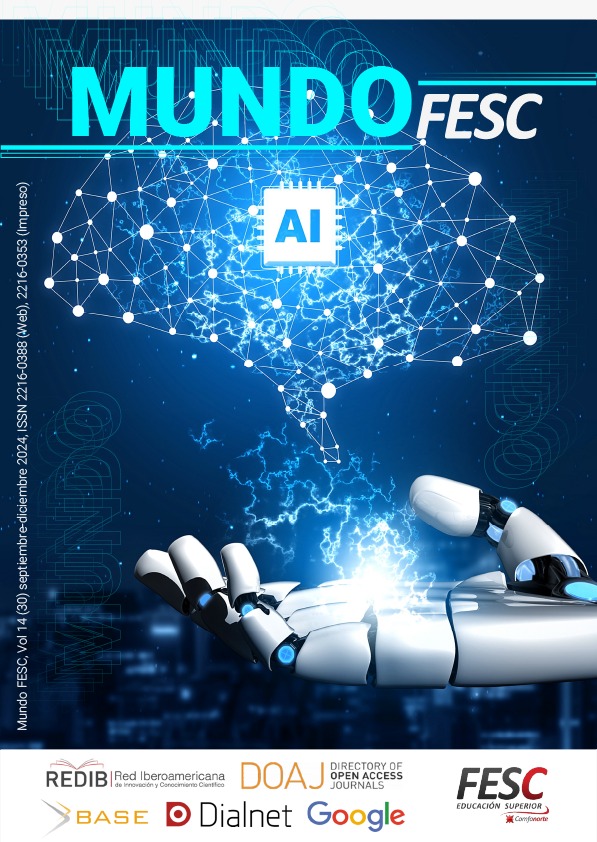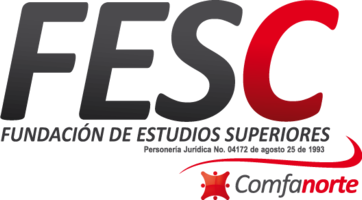Available Autonomous Transportation Technologies: A Supply and Demand Analysis
DOI:
https://doi.org/10.61799/2216-0388.1610Keywords:
Technological management, Package logistics, Urban transportation, Autonomous vehicles.Abstract
Urban logistics are commercial activities and
distribution of goods within the same urban
environment. The state of supply of autonomous
transportation technologies available on the market
was determined. Positivist paradigm research, with
quantitative method and descriptive-correlational
approach, field research and non-experimentaltransversal design. The sample was 28 courier
companies, with at least one year of experience and
a plant with at least five (5) workers in charge. The
survey technique is used, using a collection instrument
with a Likert-type scale. There is a general lack of
knowledge about autonomous transport technologies
applied to urban messaging processes available on
the market; it can be indicated as little present in
general. Consequently, these advances driven by
large technology companies that are interested in the
autonomous driving-assisted messaging sector are
generating an ecosystem of innovations that denote
a small p
Downloads
References
-[1] C. Dong, A. Akram, D. Andersson, P.-O. Arnäs y G. Stefansson, “The impact of emerging and disruptive technologies on freight transportation in the digital era: current state and future trends”, Int. J. Logistics Manage., vol. 32, n.º 2, pp. 386–412, enero de 2021. DOI: https://doi.org/10.1108/IJLM-01-2020-0043
[2] G. Bathla et al., “Autonomous Vehicles and Intelligent Automation: Applications, Challenges, and Opportunities”, Mobile Inf. Syst., vol. 2022, pp. 1–36, junio de 2022. DOI: https://doi.org/10.1155/2022/7632892
[3] E. A. Bedoya-Marrugo, L. E. Vargas-Ortiz, H. K. González-Urango and C. A. Severiche-Sierra, "Analysis of main components for structural characterization of manufacturing SMEs in Cartagena de Indias, Colombia", Lámpsakos, vol. 1, n.o 17, p. 52, June 2017. DOI: https://doi.org/10.21501/21454086.2361
[4] J. Li, E. Rombaut y L. Vanhaverbeke, “A systematic review of agent-based models for autonomous vehicles in urban mobility and logistics: Possibilities for integrated simulation models”, Comput., Environ. Urban Syst., vol. 89, p. 101686, septiembre de 2021. DOI: https://doi.org/10.1016/j.compenvurbsys.2021.101686
[5] J. Hawkins y K. Nurul Habib, “Integrated models of land use and transportation for the autonomous vehicle revolution”, Transport Rev., vol. 39, n.º 1, pp. 66–83, marzo de 2018. DOI: https://doi.org/10.1080/01441647.2018.1449033
[6] B. Nitsche, “Exploring the Potentials of Automation in Logistics and Supply Chain Management: Paving the Way for Autonomous Supply Chains”, Logistics, vol. 5, n.º 3, p. 51, agosto de 2021. DOI: https://doi.org/10.3390/logistics5030051
[7] J. A. González-Mendoza, J. Sánchez-Molina and M. Cárdenas-García, "Pensamiento estratégico y reestructuración industrial", Desarro. Gerenc., vol. 14, no 1, pp. 1-20, April 2022. DOI: https://doi.org/10.17081/dege.14.1.4995
[8] Graf, L., & Anner, F. (2021). Autonomous vehicles as the ultimate efficiency driver in logistics. Disrupting Logistics: Startups, Technologies, and Investors Building Future Supply Chains, 191-206. DOI: https://doi.org/10.1007/978-3-030-61093-7_15
[9] J. Gómez-Rojas, R. Linero-Ramos, and B. Medina-Delgado, «Heuristic linear optimization applied to transport logistics in the electronic devices industry», Mundo Fesc, vol. 11, No S2, pp. 410-420, sep. 2021. DOI: https://doi.org/10.61799/2216-0388.1042
[10] J. Zhao y J. Y. Lee, “Effect of Connected and Autonomous Vehicles on Supply Chain Performance”, Transp. Res. Rec.: J. Transp. Res. Board, p. 036119812211154, August 2022. DOI: https://doi.org/10.2139/ssrn.4029680
[11] M. Y. Mancera-Camacho, P. M. Alzate-Montoya and L.-C. Bustamante-Gutiérrez «Analysis and development trends in container transport: A route planning and optimisation approach», Mundo Fesc, vol. 12, no S1, pp. 125-142, dec. 2022. DOI: https://doi.org/10.61799/2216-0388.1181
[12] C. Iclodean, N. Cordos B. O. Varga, “Autonomous Shuttle Bus for Public Transportation: A Review”, Energies, vol. 13, n.º 11, p. 2917, junio de 2020. DOI: https://doi.org/10.3390/en13112917
[13] M. Arunmozhi, V. G. Venkatesh, S. Arisian, Y. Shi y V. Raja Sreedharan, “Application of blockchain and smart contracts in autonomous vehicle supply chains: An experimental design”, Transp. Res. Part E: Logistics Transp. Rev., vol. 165, p. 102864, septiembre de 2022. DOI: https://doi.org/10.1016/j.tre.2022.102864
[14] J. Guisasola, “La investigación basada en el diseño: algunos desafíos y perspectivas”, Rev. Eureka Sobre Enseñanza Divulg. Cienc., vol. 21, n.º 2, 2024. DOI: https://doi.org/10.25267/Rev_Eureka_ensen_divulg_cienc.2024.v21.i2.2801
[15] E. Bonelo Martínez, Proyectando. Reflexiones y ejercicios para la construcción de proyectos de investigación. Ed. Uniagustiniana, 2018.[16] M. A. Cenedesi Junior Y S. E. Vouillat, “Metodología de la Investigación: del tema a la publicación de los datos”, Rev. Cienc. Humanas, vol. 17, n.º 1, abril de 2024. DOI: https://doi.org/10.32813/2179-1120.2024.v17.n1.a976
[17] P. Singh, M. A. Dulebenets, J. Pasha, E. D. R. S. Gonzalez, Y.-y. Lau y R. Kampmann, “Deployment of Autonomous Trains in Rail Transportation: Current Trends and Existing Challenges”, IEEE Access, p. 1, 2021. DOI: https://doi.org/10.1109/ACCESS.2021.3091550
[18] L. You, J. He, W. Wang y M. Cai, “Autonomous Transportation Systems and Services Enabled by the Next-Generation Network”, IEEE Netw., vol. 36, n.º 3, pp. 66–72, mayo de 2022. DOI: https://doi.org/10.1109/MNET.006.2100542
[19] J. A. Zapata Cortés, Á. R. Vélez Bedoya y M. D. Arango Serna, “Mejora del proceso de distribución en una empresa de transporte”, Investig. Adm., vol. 49-2, junio de 2020. DOI: https://doi.org/10.35426/IAv49n126.08
[20] J. Martínez Ventura, E. Cardeño Portela, W. Ramírez Cardeño y S. Durán, “Liderazgo Transformacional Como Estrategia de Adaptación en la Gestión Logística Empresarial”, Desarro. Gerenc., vol. 9, n.º 2, pp. 140–157, febrero de 2018. DOI: https://doi.org/10.17081/dege.9.2.2980
[21] M. C. Sánchez Velásquez, K. Y. Díaz-Pedroza, y D. W. Rico Bautista, «Aplicación móvil para gestionar las rutas del transporte público », Mundo Fesc, vol. 10, n.º 20, pp. 230–240, jul. 2020. DOI: https://doi.org/10.61799/2216-0388.791
[22] M. M. Rahman y J.-C. Thill, “Impacts of connected and autonomous vehicles on urban transportation and environment: A comprehensive review”, Sustain. Cities Soc., vol. 96, p. 104649, septiembre de 2023. DOI: https://doi.org/10.1016/j.scs.2023.104649
Downloads
Published
Issue
Section
License
Copyright (c) 2024 Mundo FESC Journal

This work is licensed under a Creative Commons Attribution-NonCommercial 4.0 International License.






